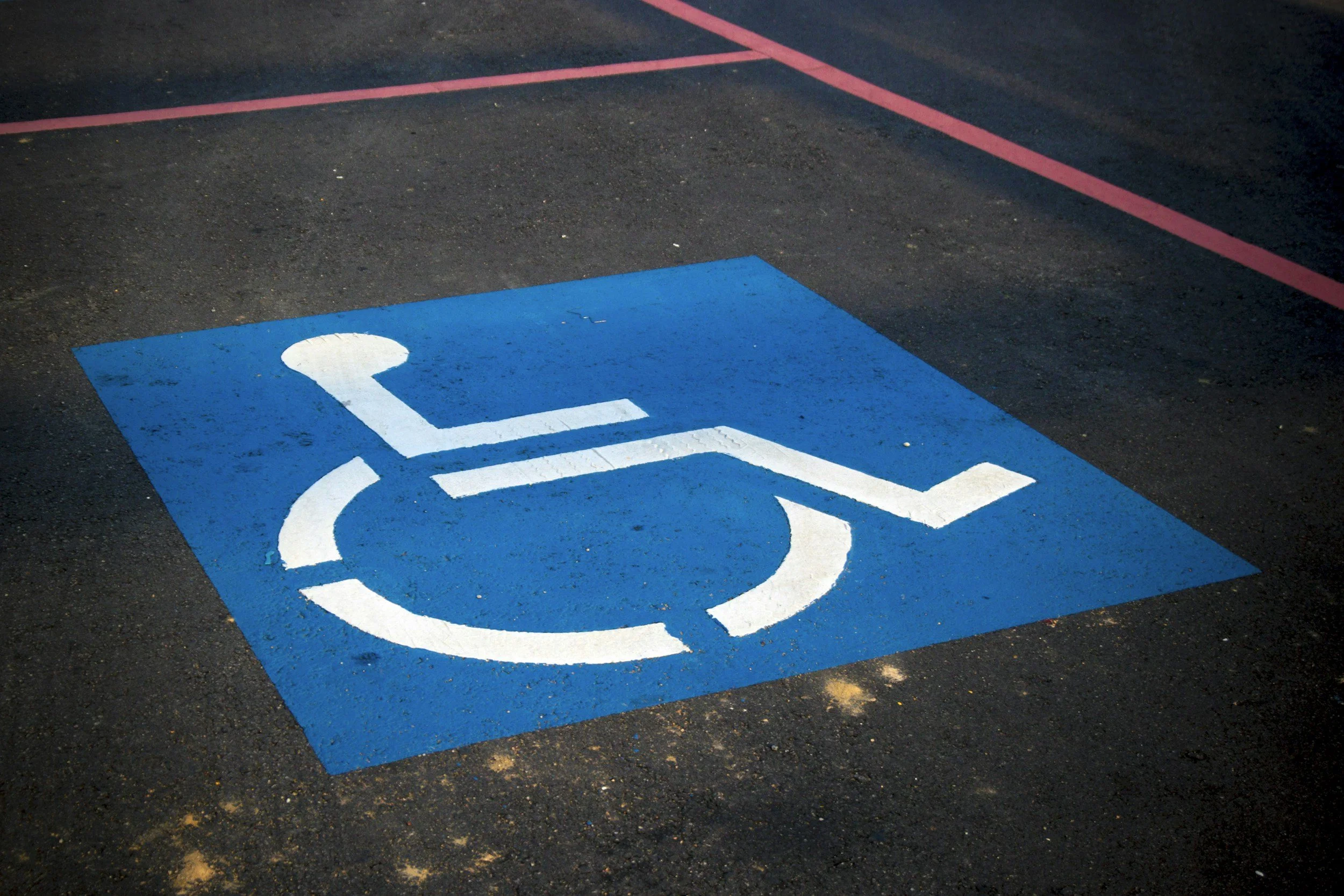Ohio Business ADA Compliance Criteria for Handicap Parking Spaces
ADA Compliance: What Ohio Businesses Need to Know About Handicap Parking Spaces
Ohio businesses must comply with the Americans with Disabilities Act. This means ensuring that several parking spots are reserved for individuals with disabilities.
On July 26, 1990, President George HW Bush signed the Americans with Disabilities Act into law. This was the world’s first comprehensive civil rights law for people with disabilities.
Learn About Our Parking Lot Striping Services
The ADA prohibits discrimination against people with disabilities. It includes sections that cover transportation, accessibility, and government services and states that state and local governments, businesses, and facilities must provide people with disabilities an equal opportunity to benefit from all services, programs, and activities. This includes allowing parking and access for disabled citizens.
Learn about the key obligations and best practices businesses must follow to comply with the ADA regarding handicapped parking spaces.
Obligations for Ohio Businesses to Comply with the ADA for Handicapped Parking Spaces
The Americans with Disabilities Act (ADA) establishes specific requirements for Ohio businesses to ensure parking facilities are accessible to individuals with disabilities. Compliance with these regulations is a legal obligation and a step toward inclusivity.
Below are the key obligations businesses must follow regarding handicap parking spaces:
Number of Spaces: The ADA mandates that the total number of handicap parking spaces available depends on the overall size of the parking lot. For example, lots with 1 to 25 spaces must have at least one accessible space. As the number of total spaces increases, so does the required number of accessible spaces.
Location: Handicap parking spaces must be positioned close to the building entrance. This is to ensure that individuals with mobility issues have the shortest and most convenient route into the building, improving accessibility.
Signage: Each designated parking space must be clearly marked with appropriate signs. These signs should include pavement markings and signage positioned at a specific height. They must be visible to all drivers, ensuring these spaces are reserved for individuals with disabilities.
Dimensions: To accommodate wheelchair users and accessible vehicles handicap parking spaces must be wider than standard spaces. Typically, an accessible parking space should be at least 60 inches wide, with additional space for van-accessible spots.
Surface and Access: The surface of the parking area must be level, well-maintained, and free of obstacles. Additionally, accessible pathways should be provided from the parking area to the building entrance, ensuring safe and convenient access for individuals with disabilities.
By complying with these ADA requirements, businesses in Ohio and across the country fulfill their legal responsibilities while fostering a more inclusive environment for all customers. The implementation of these guidelines ensures that individuals with disabilities can access businesses safely and conveniently.
Handicapped Parking Spaces: Best Practices
Maintaining handicap parking spaces goes beyond initial compliance with the ADA; it requires ongoing commitment and attention to detail. One of the most effective ways to uphold accessibility standards is through regular inspections. Businesses should routinely assess their parking lots to ensure that designated spaces remain properly marked, free from obstructions, and in good condition. Any wear and tear, such as faded markings, damaged signage, or uneven pavement, should be promptly addressed to maintain legal compliance and safety.
Another crucial best practice is staff training. Employees should be educated on the significance of accessible parking spaces and how they contribute to a more inclusive environment. Staff should also be prepared to assist customers with disabilities when needed, whether by providing directions to accessible entrances or ensuring that parking spaces remain available for those who require them. A well-informed staff fosters inclusivity and ensures accessibility remains a priority in day-to-day operations.
Engaging with the community, particularly local disability advocacy groups, can provide businesses with valuable insights into how to improve their accessibility features. These organizations can offer firsthand perspectives on the challenges individuals with disabilities face and suggest enhancements beyond mere compliance. By seeking feedback and making necessary improvements, businesses demonstrate a genuine commitment to accommodating all customers.
Additionally, businesses should regularly review and update parking policies to align with changes in state or federal laws, as well as evolving best practices. Staying informed about new regulations and technological advancements—such as improved signage, smart parking solutions, or enhanced surface materials—ensures that accessibility efforts remain current and effective.
By implementing these best practices, businesses in Ohio and beyond will meet their legal responsibilities and cultivate an environment of inclusivity and respect. Proactive measures such as inspections, staff training, community engagement, and policy updates reinforce a commitment to accessibility, ultimately enhancing a business’s reputation and fostering customer loyalty.
At The Super Stripers, our mission is to provide unparalleled parking lot striping services with a focus on reliability, friendliness, and uncompromising quality. We are dedicated to enhancing the appearance, safety, and organization of parking facilities and other line-marking services, such as parking garages, athletic courts, warehouses, and more.
With attention to detail and a commitment to excellence, we aim to be the trusted partner for all your striping needs. If you are located in Columbus or Central Ohio, please call (614) 648-0799 or email contact@superstripers.com for more information. We are locally owned and fully insured, and we look forward to working with you.




